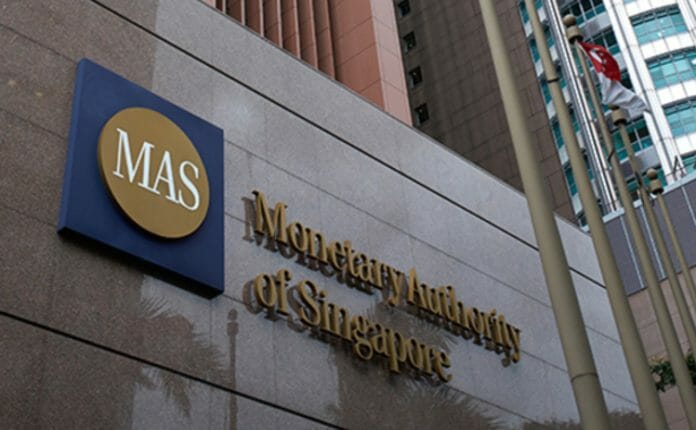As MAS (Monetary Authority of Singapore) continues to work towards its goal of a climate-resilient reserves portfolio, the authority body aims to cut the emissions intensity of its equities investments by up to 50 per cent by financial year 2030, .
MAS manages the City State’s official foreign reserves, will also exclude from its portfolio companies which derive more than 10 per cent of their revenues from thermal coal mining and oil sands activities.
According to Chief Ravi Menon, these exclusions will be “gradually implemented” and the central bank does not expect a significant impact on returns.
Some of the measures to achieve that include the roll-out of a “portfolio overlay” by next year that would gradually tilt the equities portfolio towards less carbon-intensive investments.
Other measures include raising its allocations to climate and environmentally conscious investment strategies.
As of March 2022, it has fully funded the US$1.8 billion planned under the Green Investment Programme which it announced last year.
The transition to a low-carbon global economy could accelerate amid a growing importance placed on climate mitigation, the Chief of MAS noted.
MAS reports its portfolio carbon footprint via the weighted average carbon intensity (WACI) – which is derived by taking the carbon intensity of each of the companies in the portfolio, weighted by the relative size of the investments in those companies.
“Notwithstanding the increase in WACI over the period, we expect the WACI of the equities portfolio to decline over time, supported by the implementation of the portfolio actions,” the central bank said. The annual report also disclosed the WACI of MAS’ corporate bond portfolio for the first time.
Even though corporate bonds are relatively less impacted by climate change, the central bank said it decided to expand its scope of monitoring and reporting as part of efforts to manage long-term risks.
At the end of March 2022, the WACI for corporate bonds was 76 per cent lower than its market benchmark due to how its framework screens out debt securities with smaller issuance sizes. This has resulted in a lower portfolio exposure to securities issued by companies in carbon-intensive sectors compared to the benchmark.
The MAS first published a sustainability report last year, laying out the need for a climate-resilient reserves portfolio.
“As the steward of Singapore’s official foreign reserves, MAS will ensure that the reserves investment portfolio is well-positioned for the transition to a low-carbon future. MAS will continue to monitor climate signposts to assess the pace and nature of the low-carbon transition, and will adjust our portfolio actions accordingly.”
MAS’ sustainability push also includes the greening of the country’s finance sector. MAS and the Singapore Exchange are stepping up efforts to strengthen the comparability and reliability of sustainability disclosures for listed companies, major financial institutions and retail ESG funds.
First, funds that are sold to retail investors in Singapore under the ESG label will soon have to provide relevant information to better substantiate their ESG label. These include details on the fund’s investment strategy, criteria and metrics used to select investments, as well as risks and limitations associated with the fund’s strategy.
MAS will require the disclosures to be made on an ongoing basis. Investors will receive annual updates on how well the fund has achieved its ESG focus. The new guidelines, to take effect from January 2023, will help to reduce greenwashing risks and enable retail investors to better understand the ESG funds they invest in.
There will be no ratings or colour codes to depict different fund standards, but a disclosure guidance i.e with focus on reporting and disclosure requirements at the prospectus stage, as well as the ongoing basis. This is to allow retail investors some way to compare across the funds they invest in that are supposedly ESG.
In addition, listed companies will be required to disclose their climate-related risks based on recommendations by the Task Force on Climate-related Financial Disclosures (TCFD) from 2023 onwards.
Those in the financial services, energy, agriculture, food and forest products industries will be scoped in first. By 2025, more than 60 per cent of SGX-listed entities by number and 78 per cent by total market capitalisation will be required to make mandatory disclosures.
Mandatory climate-related disclosures for major financial institutions will kick in later, but reference the International Sustainability Standards Board (ISSB) standard.
MAS is also planning to engage financial institutions on their transition plans towards net-zero or other relevant emissions targets.
An ESG disclosure platform will be launched later this year, which aims to allow listed companies in Singapore to upload their sustainability data in “a structured and efficient manner” while enabling multiple external stakeholders to access these data.
Among other moves, it intends to incorporate a range of long-term climate scenarios into its industry-wide stress test exercise this year. By doing so will help raise awareness of the potential economic and financial implications of climate risks, and facilitate learning for both the central bank and financial institutions.
The central bank has introduced various grants to support the issuance of green bonds or nudge businesses to take up green and sustainability-linked loans for developing a vibrant green finance ecosystem.









